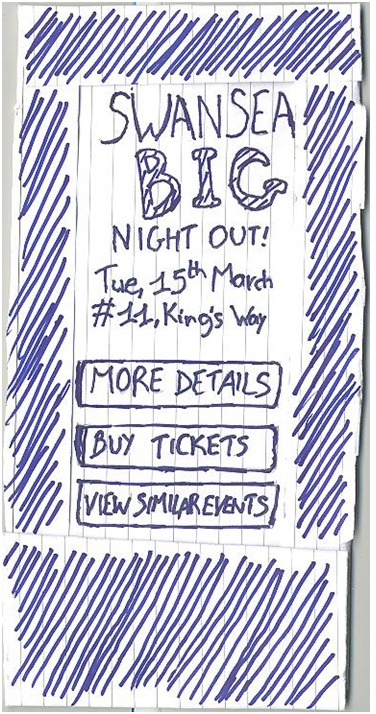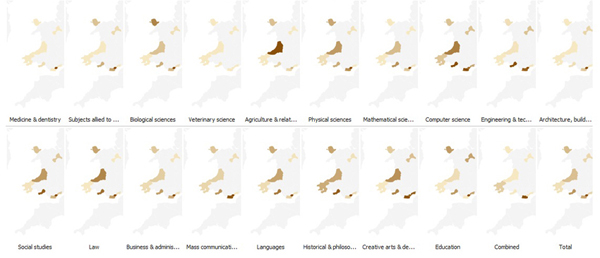There are a lot of great skills you get from school/university lectures, no doubt. But on the other hand, for some specific and practical "super powers" you want to acquire or enhance, you have no other choice but teach yourself. The potential reasons are legion. That could happen by mere interest or if you want to deepen your knowledge in one of your subjects. Or maybe for the sake of personal projects, say learning some essential life skill they don't teach you in class. So yes, when college doesn't prepare you for life battles, you have to coach yourself.
Anyway, I am not here to complain about any education system. I am writing this post because I would like to share the best and most useful books I went through, as I have been reading a lot lately. I read on a variety of fields and for each of them I am suggesting the top books (according to my humble opinion). Here we go:...
Read more
5 years ago, if I was told that I could run a blog, I would not have believed it. As a software engineer, I was spending more time designing and writing programs. However, a priori, nothing suggested that I could write good articles too....
Read more
If you are not into programming, I need to start by telling you that a programming language is basically an artificial language (system of communication) designed to communicate instructions to a machine, typically a computer.
Now there are a lot of programming languages out there. Some are more popular than others, some are more recent, some are more powerful to some extent.
In an ideal world, each programming language serves a specific purpose. So an engineer should be able to adapt to the on going project and choose the optimal technologies. But the truth is,...
Read more

If you are a programmer, there are probably a lot of reasons that motivate you to do what you do. I hope you find here some more motivations.
If you want to be a programmer, you may find here some more reasons to go for that awesome path.
However, I guess I am writing this mainly for those who don't know what to do with their life. Here are some clues about a job that is fun, useful and satisfaying to many extents.
From the top of my mind, here are 8 reasons why you would enjoy being a programmer. I hope this inspire you.
1. Programming makes your dreams come true. When you understand programming, you can give life to your thoughts by applying them to real life. You can litterally create things....
Read more

This study is about a device which is probably the best joypad of all times: the Dual Shock. It has many variants and we can expect it to keep evolving in the coming years, however, we will focus here on the current version, the Dual Shock 3.
In this article, we will go through the history of the game controller in general and then focus on the history of the Dual Shock itself, so that we understand in which context and how it was built. In a next part, we will then analyse the controller by studying its specifications and comparing it to its most direct competitor, the Xbox 360 controller.
Basics
There are many categories of game controllers, among which we will retain the most popular one, the gamepad, as that’s exactly what the Dual Shock is. Gamepads, also known as joypads, can have many action buttons combined with one or more omnidirectional control sticks or buttons. They are held using both hands with fingers (typically thumbs) used to provide input; as mentioned on Wikipedia, most modern game controllers are a variation of a standard gamepad. Common additions include shoulder buttons placed along the edges of the pad, joysticks, centrally placed buttons and internal motors that provide haptic feedback (as in, they typically vibrate).
Some history
In his article intituled “History of the game controller”, Catalin Ivan stated “Ever since the very beginning of video gaming, the controller has been the best (and usually the only) way of man-machine interaction.” That’s actually an interesting fact, and it would be good to follow the evolution from that “very beginning” to see how we reached the current gamepad technologies. There had actually been many, many gamepads released throughout the history, we are not going to study all of them, we are just going to review those who appear like important milestones that we observed from a study by John Honnibal and that we are summing up in the following table:...
Read more
In this post I will show you two methods to configure your .NET applications so that they would launch as soon as Windows starts. These two methods do not require any change to the registry, hence you don't need to worry about cleaning up that database if the user uninstalls your application.
The first method:
From the Windows Installer Deployment Project, follow these steps:...
Read more

Last week, I had to make a paper prototype for a mobile application I was working on. I ended up building a quite nice thing (picture above) but at the beginning I was not sure about how to go about it. So I just thought I would write about it to share how I proceeded....
Read more

This study is a comparative study of two particular types of visualization techniques in detail.
We chose to study the map-based visualization and the bubble charts because they had been the most fascinating visualizations throughout this study. We are going to compare those two types on many factors.
Defining the visualizations
A thematic map is a type of map or chart especially designed to show a particular theme connected with a specific geographic area. These maps can portray physical, social, political, cultural, economic, sociological, agricultural, or any other aspects of a city, state, region, nation or continent....
Read more

This study is about the production and the description of some advanced visualization charts related to the higher education in South West Wales. Some real data had been made available to complete this task and the objective is to get some meaningful and interesting insight about the data.
The tool used is IBM Many Eyes. It’s a web service that lets user upload data sets and can turn them into various visualizations. There were a lot of choices but only advanced visualization types (especially maps) had been highly recommended rather than basic charts. Further, graphs that show rises and falls over time had to be avoided as the provided data was not time oriented. So the five visualization types demonstrated here are block histograms, bubble charts, maps, matrix charts and tree maps....
Read more

This article is a follow up to my previous article on my internship at General Electric. It’s just a short note to sum up some important things I learnt.
1. Theory learnt in class is actually applied in the industry: there are some things that you learn in university you will probably never use again but other things you will use every day of your life. At the beginning I was like, who cares if the 7 layers of the OSI model are the application, the presentation, etc.? And who care about normalising the databases until it is in Boyce-Codd normal form? Actually a lot of people take those things very seriously.
2. Documentation is important. I used to see it as a time consuming process that was barely worth doing. Now I understand how it increases teamwork efficiency....
Read more